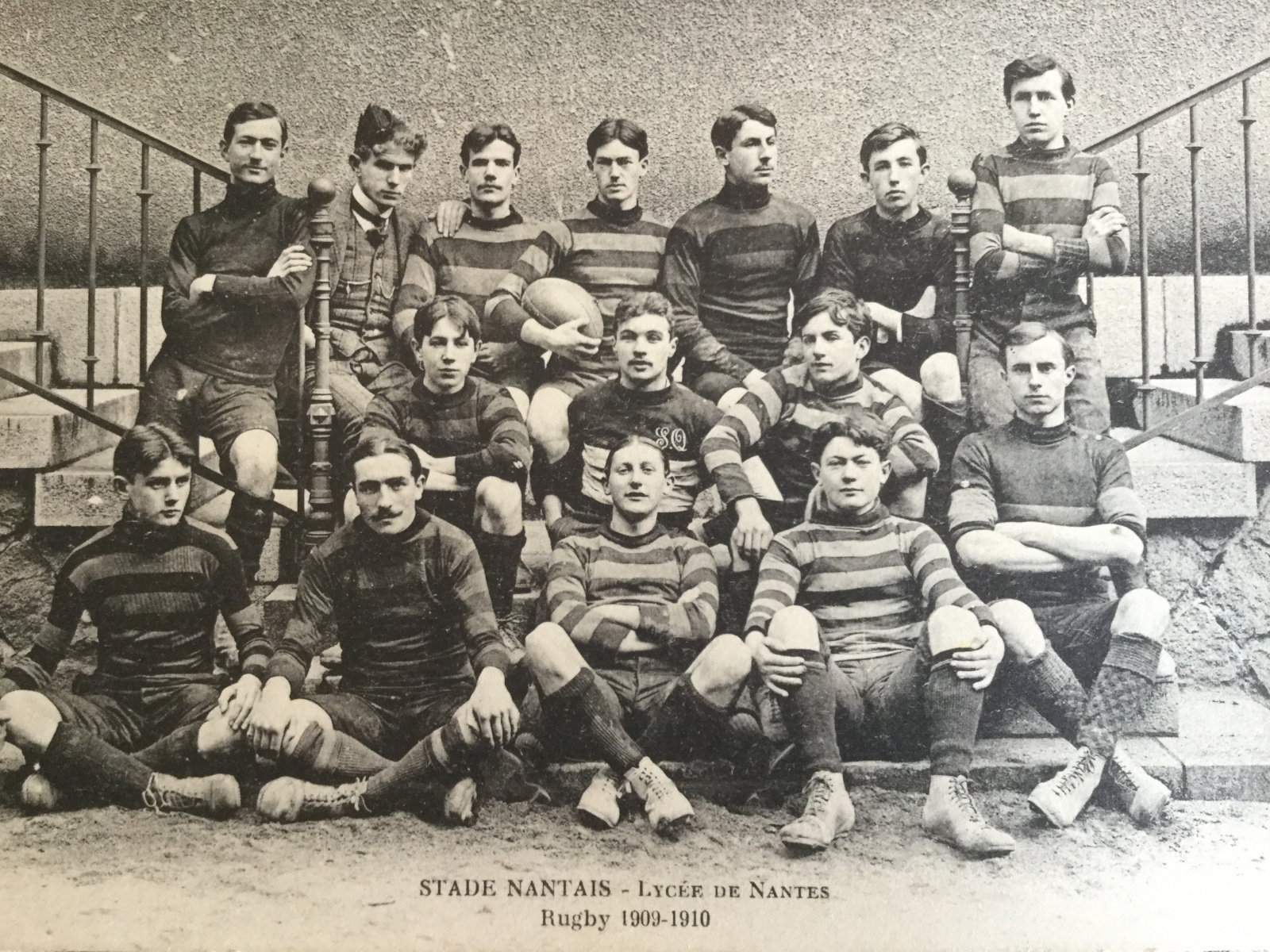Rugby and football were authorised in schools from 1889, the idea being to improve young people’s physical condition, as well as borrow from the English notion of including sports as part of education.
Rugby players from Nantes Lycée, (renamed Lycée Clemenceau in 1919), crowned French inter-school rugby champions at the end of the 1906-1907 season, didn’t just play once a week on Thursdays for their school club; several pupils from the Lycée also sported SNUC shirts on Sundays - proof of their passion for the sport. Some, like Pierre Monier, Paul Perthuy or Alfred Eluère later joined the SNUC Firsts, following in the footsteps of other ex-Nantes Lycée students like Charles Hervoche. By joining other committed teams in the championnat de l'Atlantique, these young students helped to ensure the continuation and future of rugby in Nantes.
Many young people who discovered rugby during their school years went on to play the sport as adults. In 1911 three players, Pierre Monier, Pierre Rambaud and Georges Lefèvre, who had all attended the Lycée in Nantes established the Union sportive pornicaise. “It’s a great way to widen the sports' influence and maximise publicity”, praised Le Phare de la Loire.
The Nantes Lycée was “where rugby players are made”, exclaimed the daily newspaper, L’Ouest, in 1913. The Anjou-based press regularly highlighted new recruits to the Angers université club’s team who had attended Nantes Lycée, as proof of their players’ value. Ex-Nantes Lycée student Alfred Eluère also put his experience to use to become president of the French Rugby Federation between 1942 and 1952.
Translation: Tilly O'Neill


